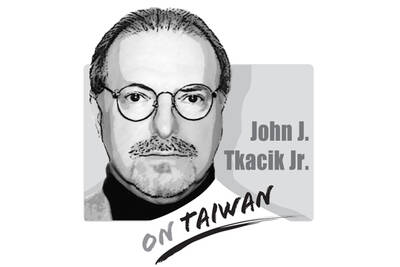In the intricate ballet of geopolitics, names signify more than mere identification: They embody history, culture and sovereignty. The recent decision by China to refer to Arunachal Pradesh as “Tsang Nan” or South Tibet, and to rename Tibet as “Xizang,” is a strategic move that extends beyond cartography into the realm of diplomatic signaling.
This op-ed explores the implications of these actions and India’s potential response.
Names are potent symbols in international relations, encapsulating the essence of a nation’s stance on territorial disputes.
China’s choice to rename regions within Indian territory is not merely a linguistic exercise, but a symbolic assertion of sovereignty.
Such actions are provocative, touching upon the sensitive chords of territorial integrity and national identity.
India’s response, maintaining the use of the name “Tibet,” is a reaffirmation of historical and cultural recognition.
By doing so, India not only challenges China’s unilateral renaming, but also underscores its commitment to respecting the historical context of the region.
This stance is significant, as it reflects India’s adherence to global norms and understanding, despite China’s attempts to reshape international perceptions.
The term “Sinicization” denotes the process by which non-Chinese societies are influenced to adopt Chinese cultural, linguistic and societal norms.
In Tibet’s case, this process is a deliberate effort by the Chinese government to integrate Tibetan culture into the broader Chinese cultural framework.
The renaming of Tibet to “Xizang” is a facet of these Sinicization efforts, aiming to solidify China’s rule and dilute the Dalai Lama’s influence and the global recognition of the Tibetan cause.
The international community, including governments and organizations, often weighs the historical and cultural context heavily when referring to regions.
Despite China’s renaming efforts, many continue to use the term “Tibet,” aligning with the established global understanding.
This collective stance is crucial, as it supports the cultural and religious identity of the Tibetan people against the tide of Sinicization.
The Indian government has firmly rejected China’s attempts to rename places in Arunachal Pradesh, emphasizing that such actions do not alter the state’s status as an integral part of India.
This rejection is a clear message to China and the international community that India stands firm on its territorial sovereignty.
India’s potential reciprocation, refusing to accept the name “Xizang” and instead using “Tibet,” is a powerful diplomatic gesture.
It is a declaration that India does not recognize the Sinicization of Tibet and supports the region’s historical and cultural identity as they are known internationally.
The naming dispute between India and China over Tibet and Arunachal Pradesh is more than a war of words: It is a reflection of deeper geopolitical tensions and the struggle for cultural preservation.
India’s stance, rooted in historical recognition and international law, serves as a bulwark against attempts to rewrite history and infringe upon rights of sovereignty.
As the situation evolves, the international community’s role in upholding these principles becomes ever more critical, ensuring that names — and the identities they represent — remain respected on the global stage.
Khedroob Thondup is a former member of the Tibetan parliament in exile.

Elbridge Colby, America’s Under Secretary of Defense for Policy, is the most influential voice on defense strategy in the Second Trump Administration. For insight into his thinking, one could do no better than read his thoughts on the defense of Taiwan which he gathered in a book he wrote in 2021. The Strategy of Denial, is his contemplation of China’s rising hegemony in Asia and on how to deter China from invading Taiwan. Allowing China to absorb Taiwan, he wrote, would open the entire Indo-Pacific region to Chinese preeminence and result in a power transition that would place America’s prosperity
A few weeks ago in Kaohsiung, tech mogul turned political pundit Robert Tsao (曹興誠) joined Western Washington University professor Chen Shih-fen (陳時奮) for a public forum in support of Taiwan’s recall campaign. Kaohsiung, already the most Taiwanese independence-minded city in Taiwan, was not in need of a recall. So Chen took a different approach: He made the case that unification with China would be too expensive to work. The argument was unusual. Most of the time, we hear that Taiwan should remain free out of respect for democracy and self-determination, but cost? That is not part of the usual script, and
All 24 Chinese Nationalist Party (KMT) lawmakers and suspended Hsinchu Mayor Ann Kao (高虹安), formerly of the Taiwan People’s Party (TPP), survived recall elections against them on Saturday, in a massive loss to the unprecedented mass recall movement, as well as to the ruling Democratic Progressive Party (DPP) that backed it. The outcome has surprised many, as most analysts expected that at least a few legislators would be ousted. Over the past few months, dedicated and passionate civic groups gathered more than 1 million signatures to recall KMT lawmakers, an extraordinary achievement that many believed would be enough to remove at
Behind the gloating, the Chinese Nationalist Party (KMT) must be letting out a big sigh of relief. Its powerful party machine saved the day, but it took that much effort just to survive a challenge mounted by a humble group of active citizens, and in areas where the KMT is historically strong. On the other hand, the Democratic Progressive Party (DPP) must now realize how toxic a brand it has become to many voters. The campaigners’ amateurism is what made them feel valid and authentic, but when the DPP belatedly inserted itself into the campaign, it did more harm than good. The